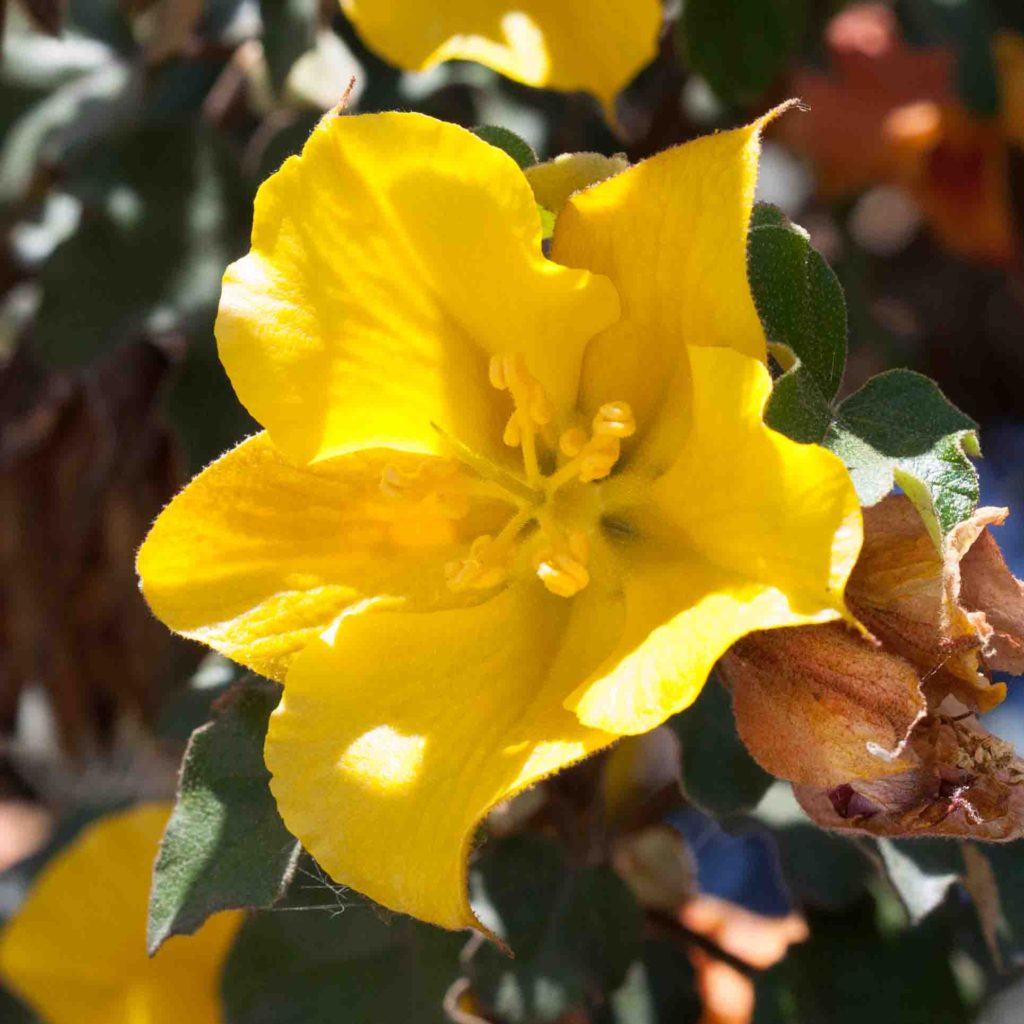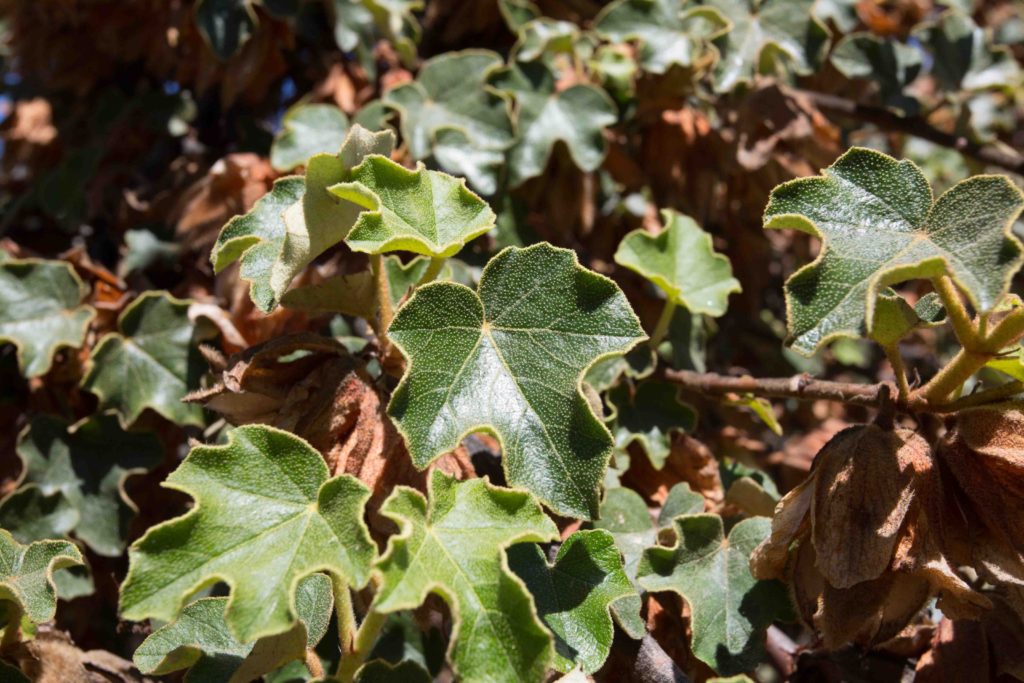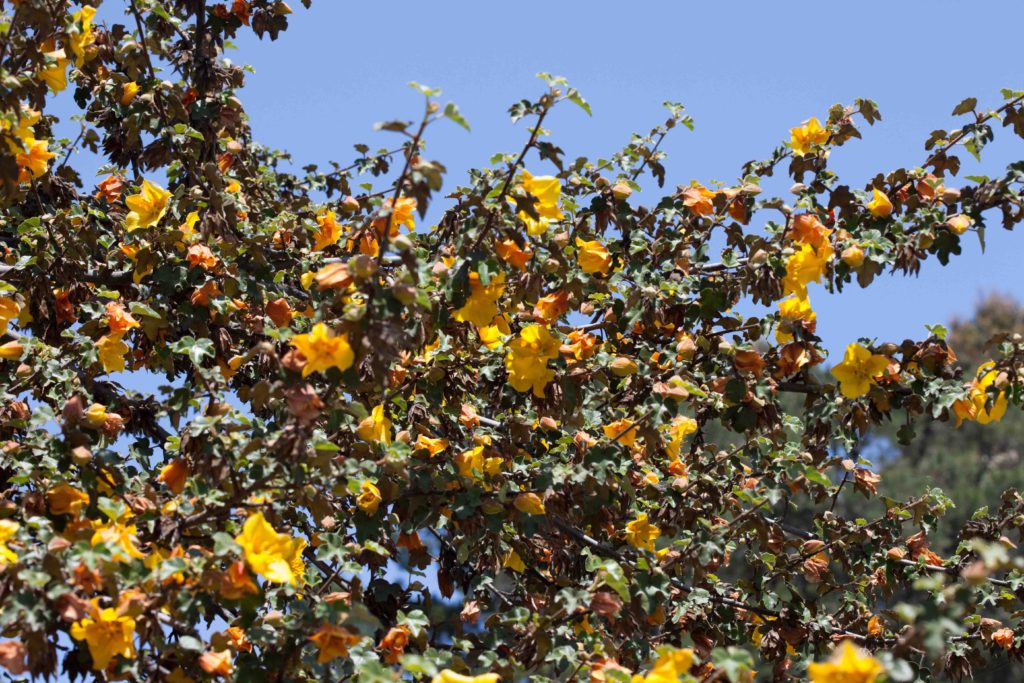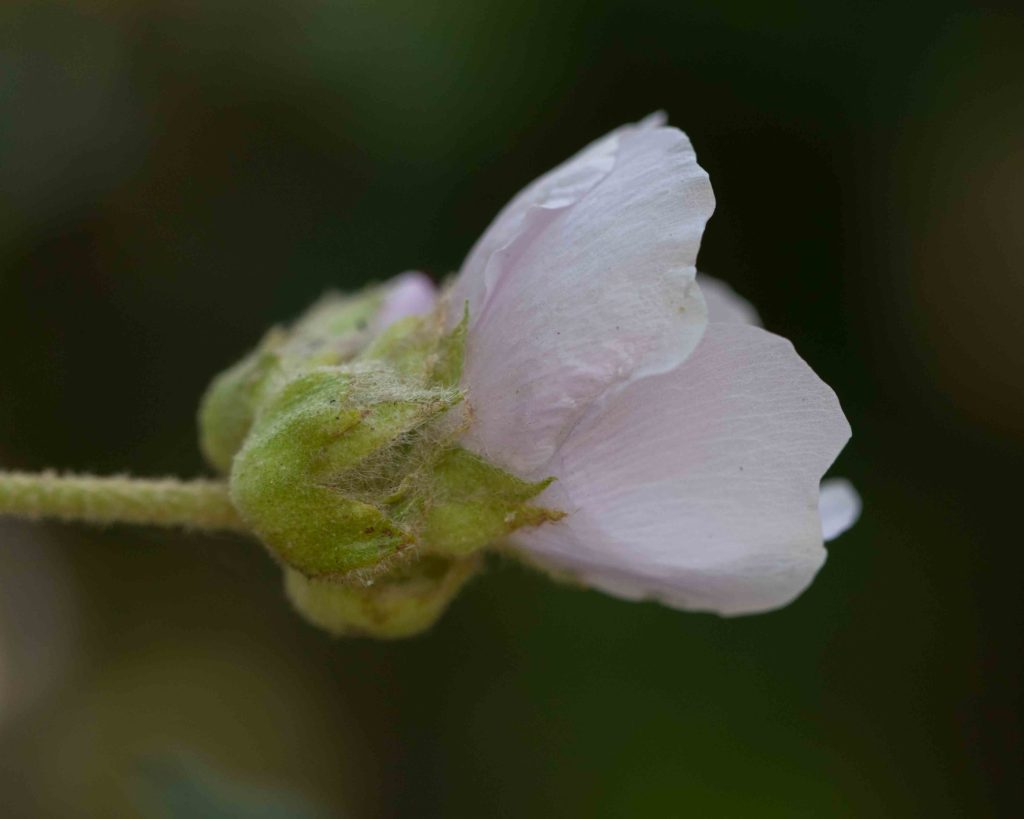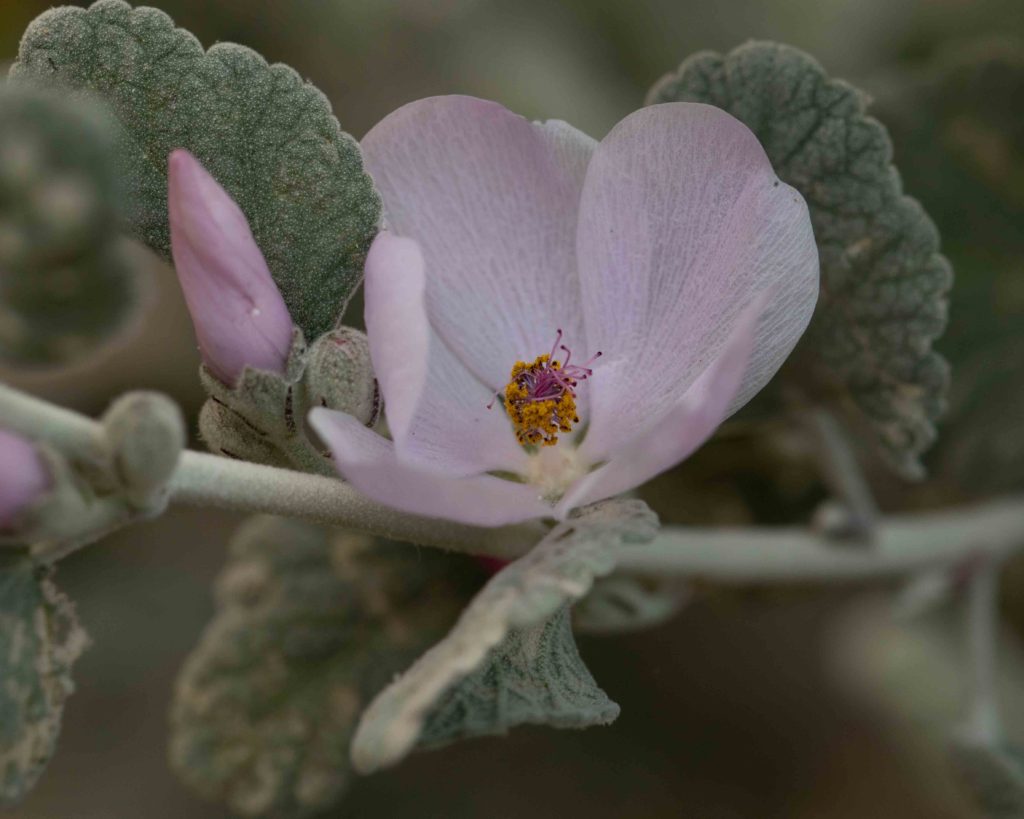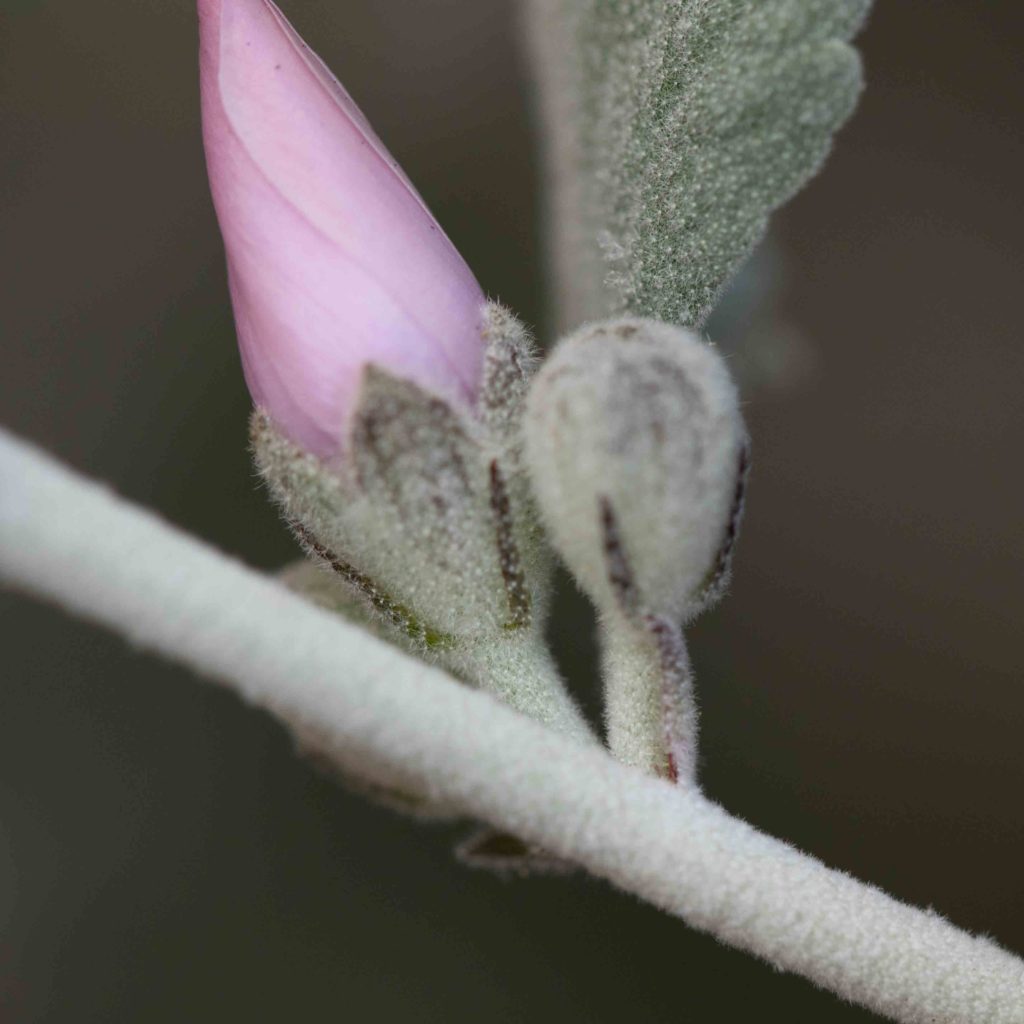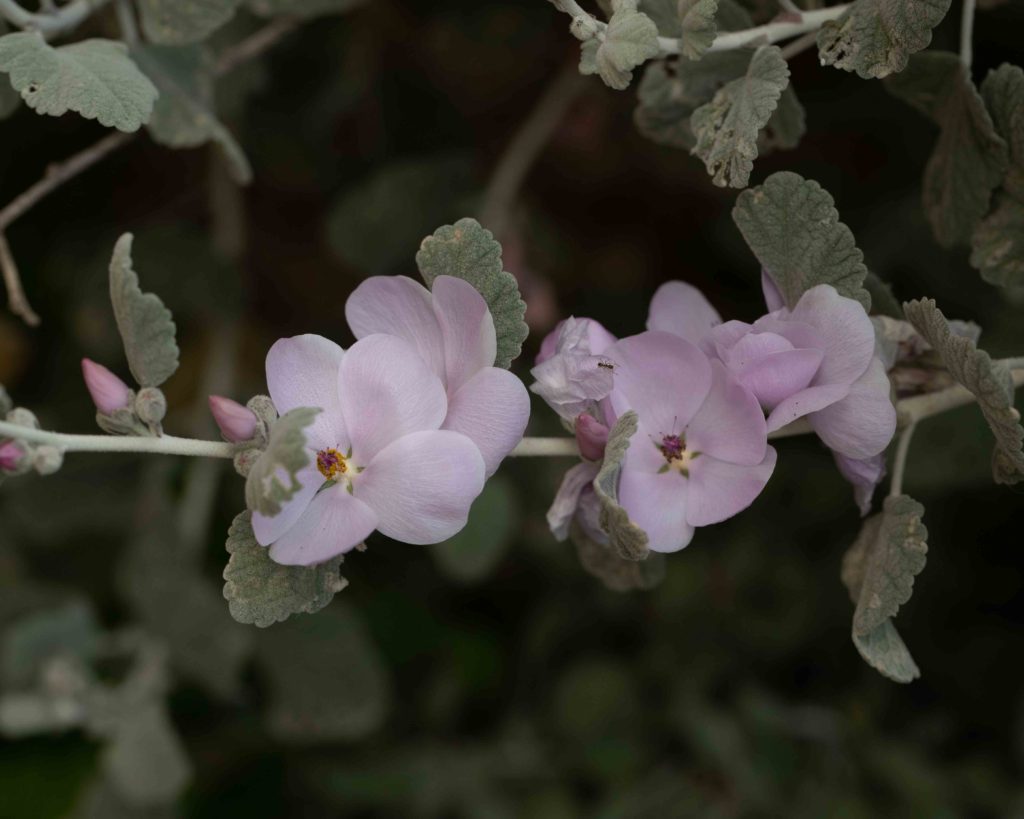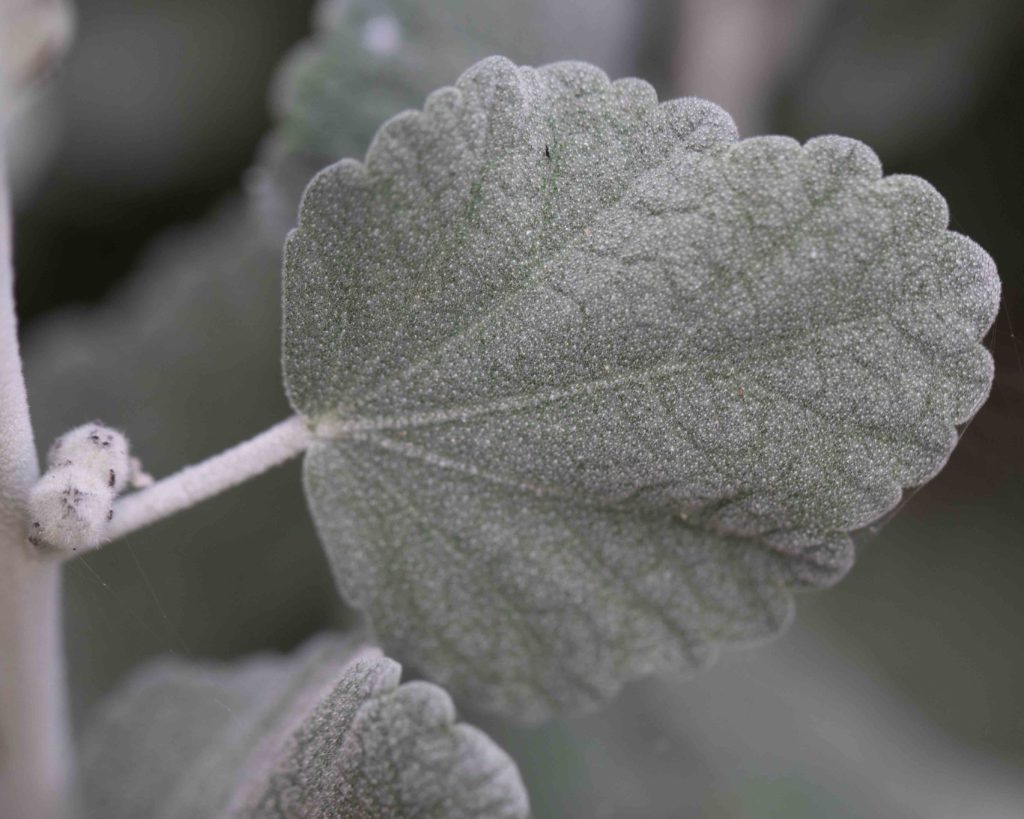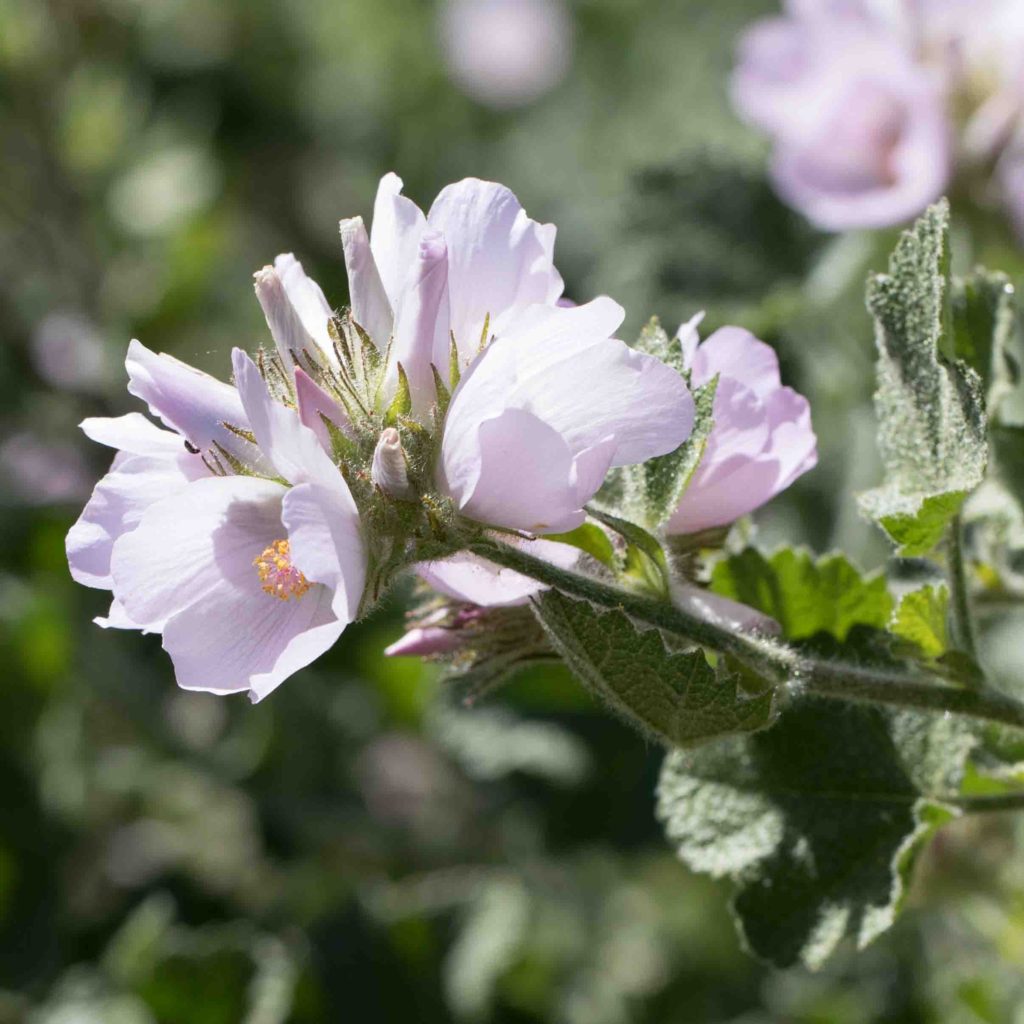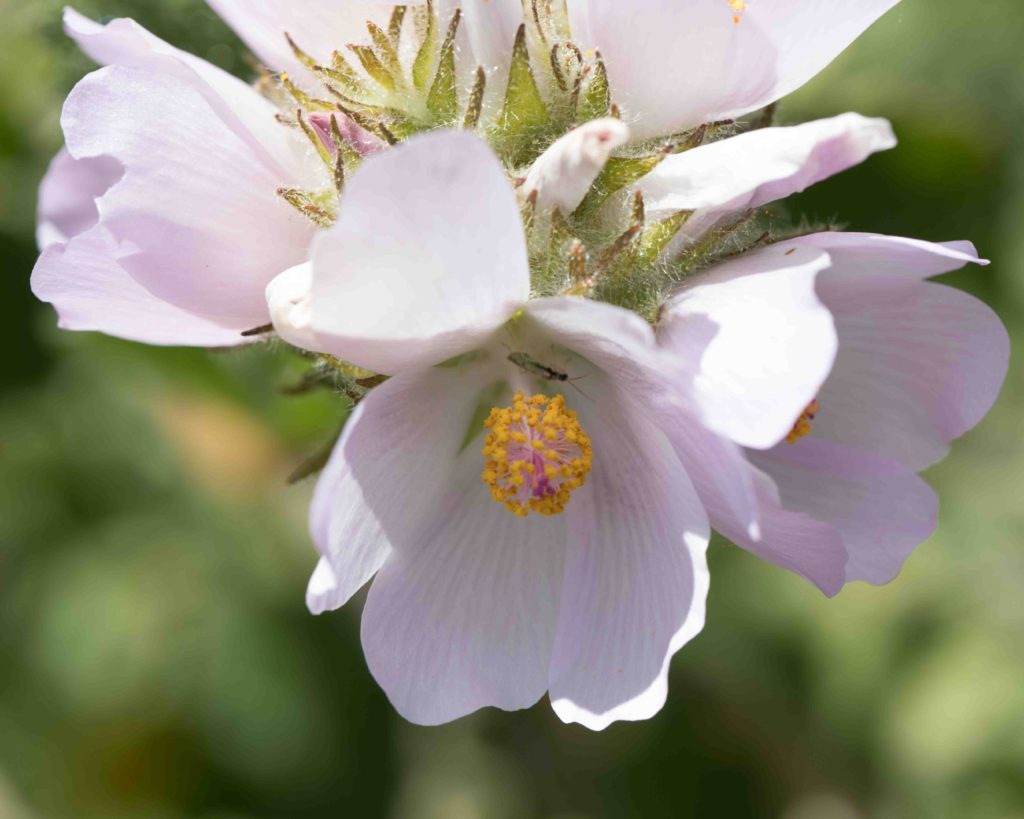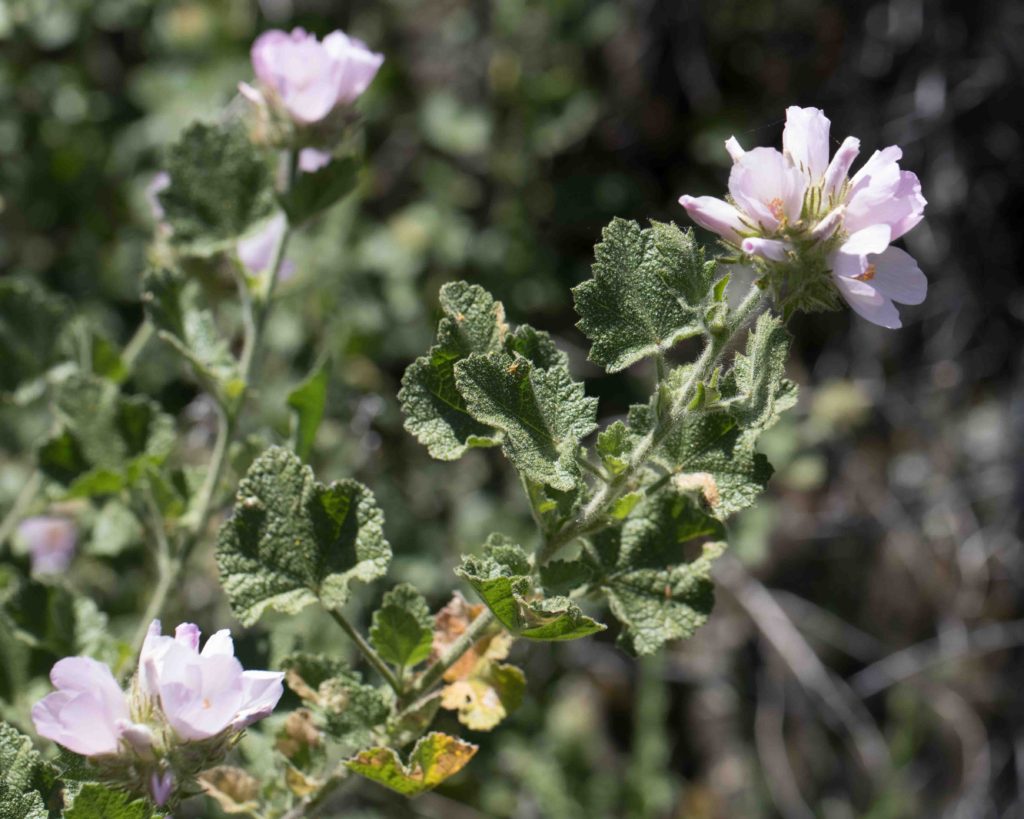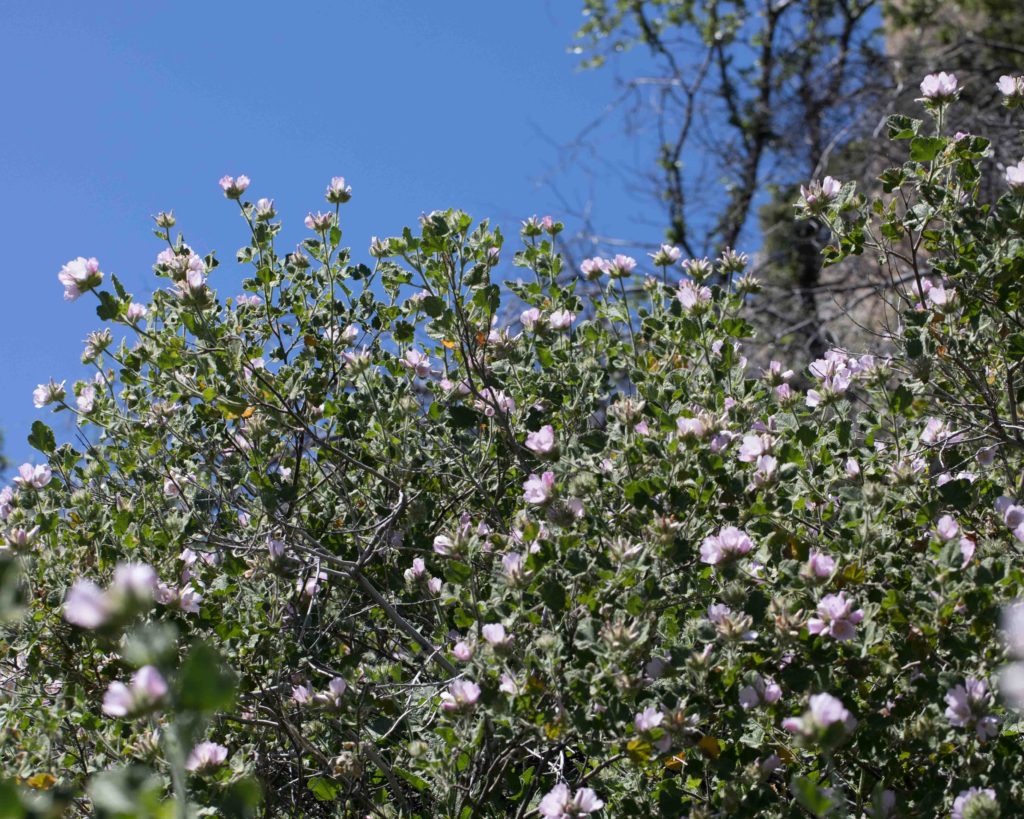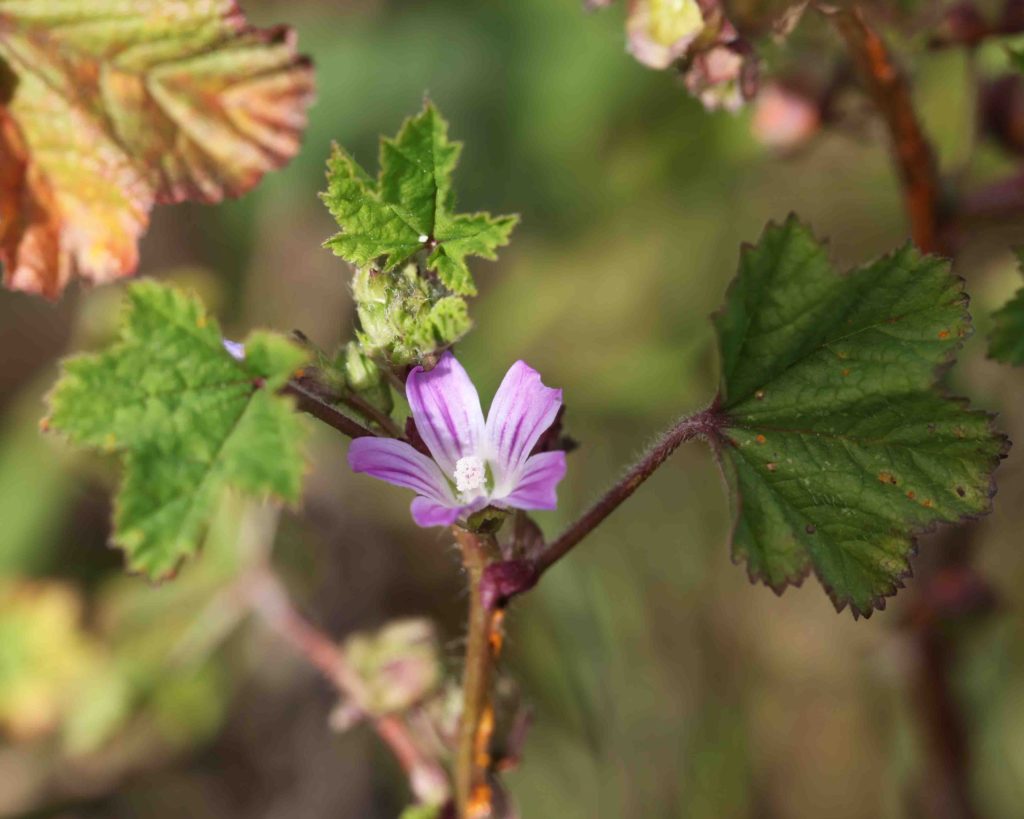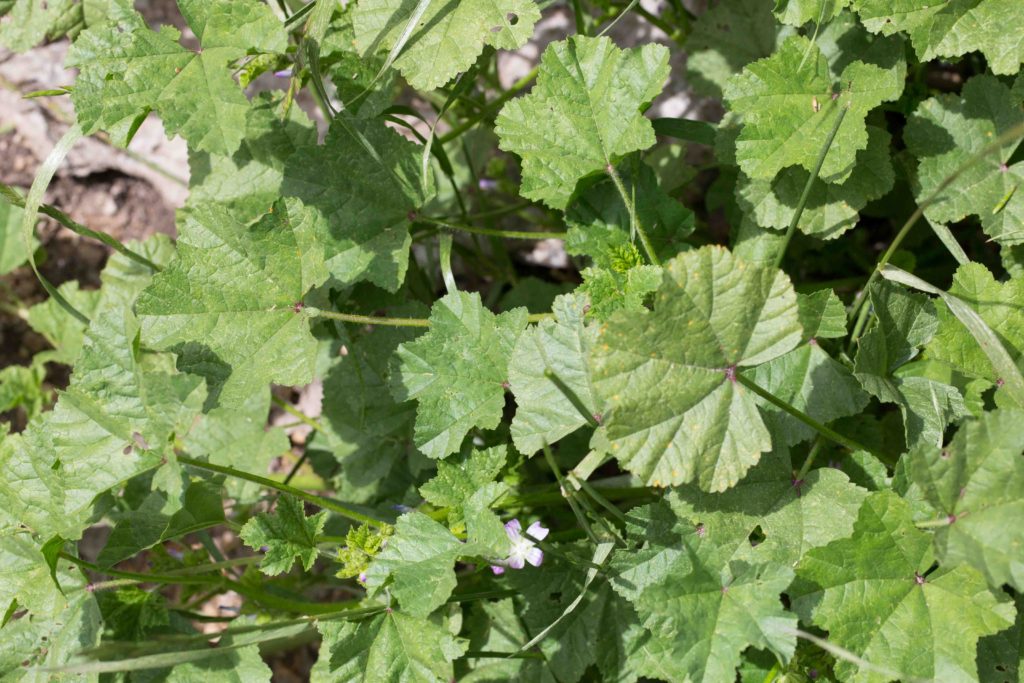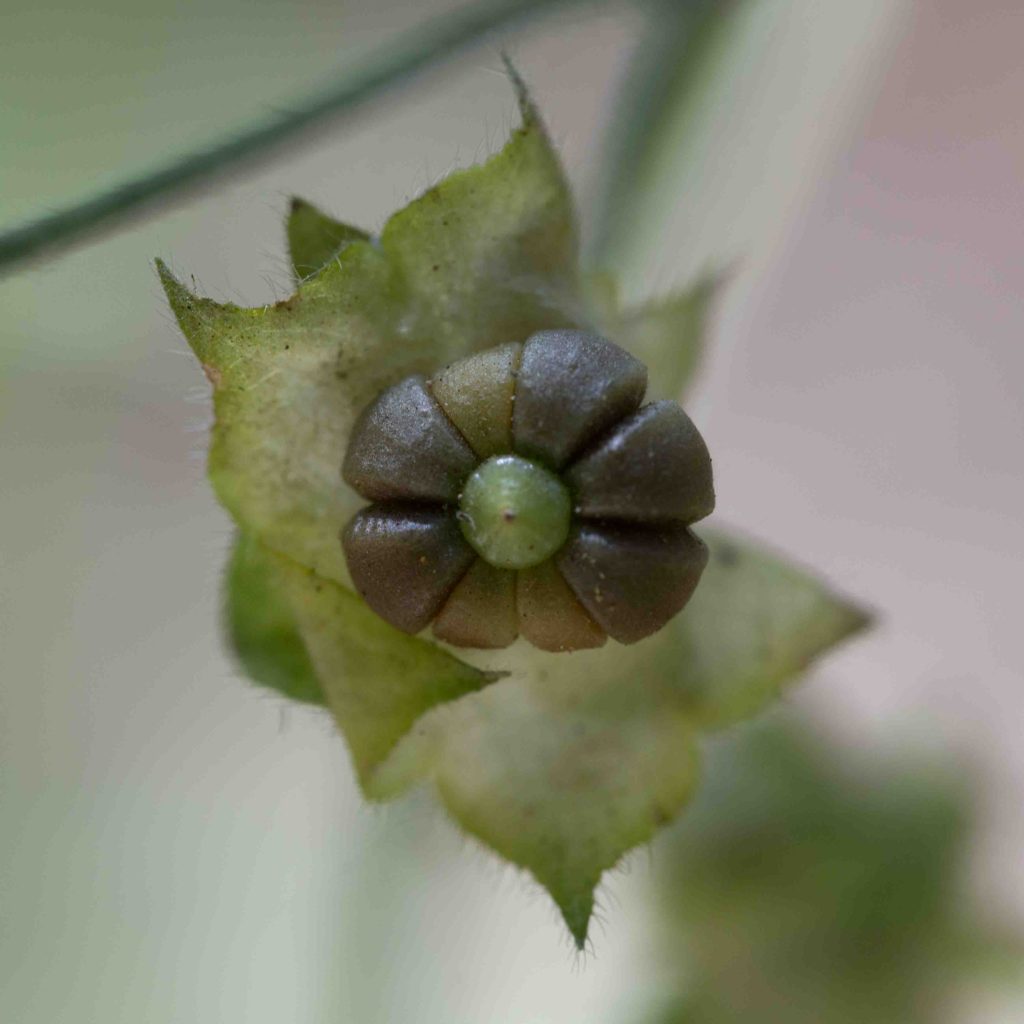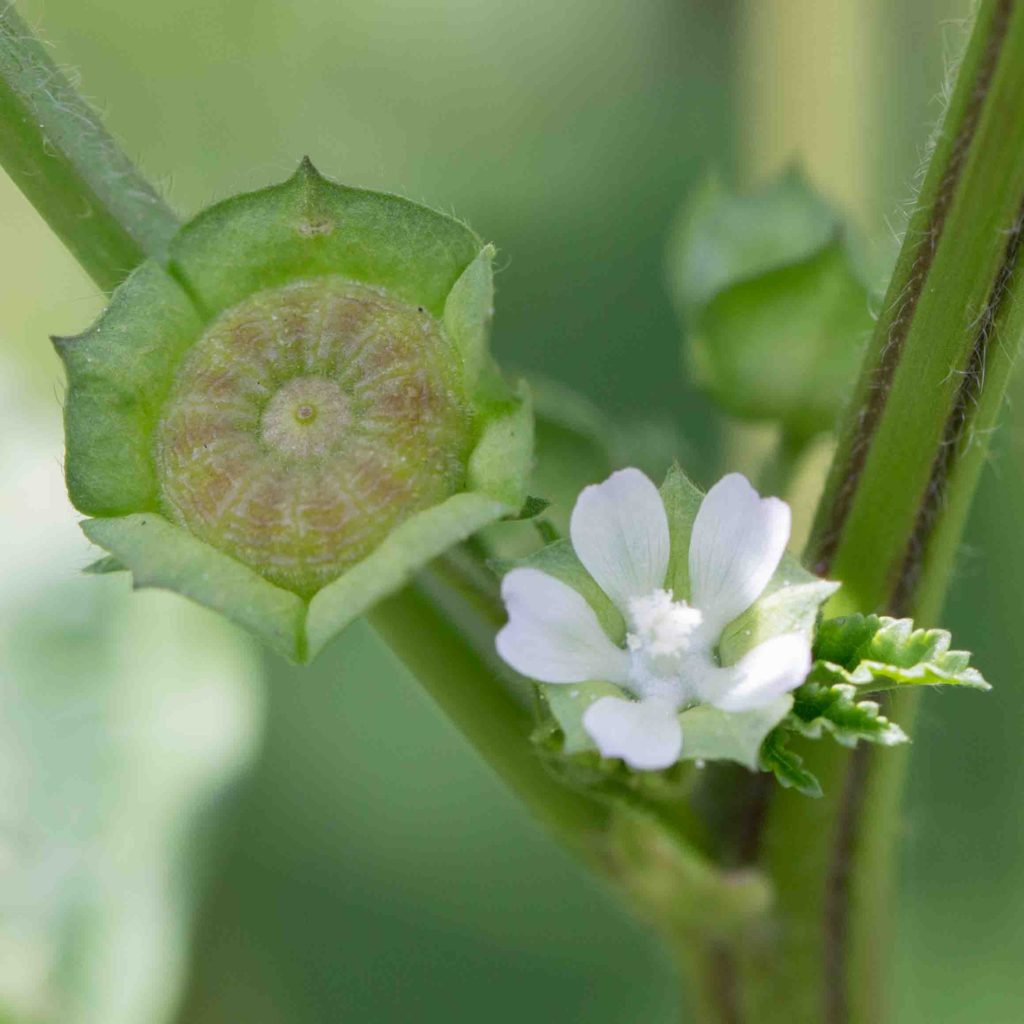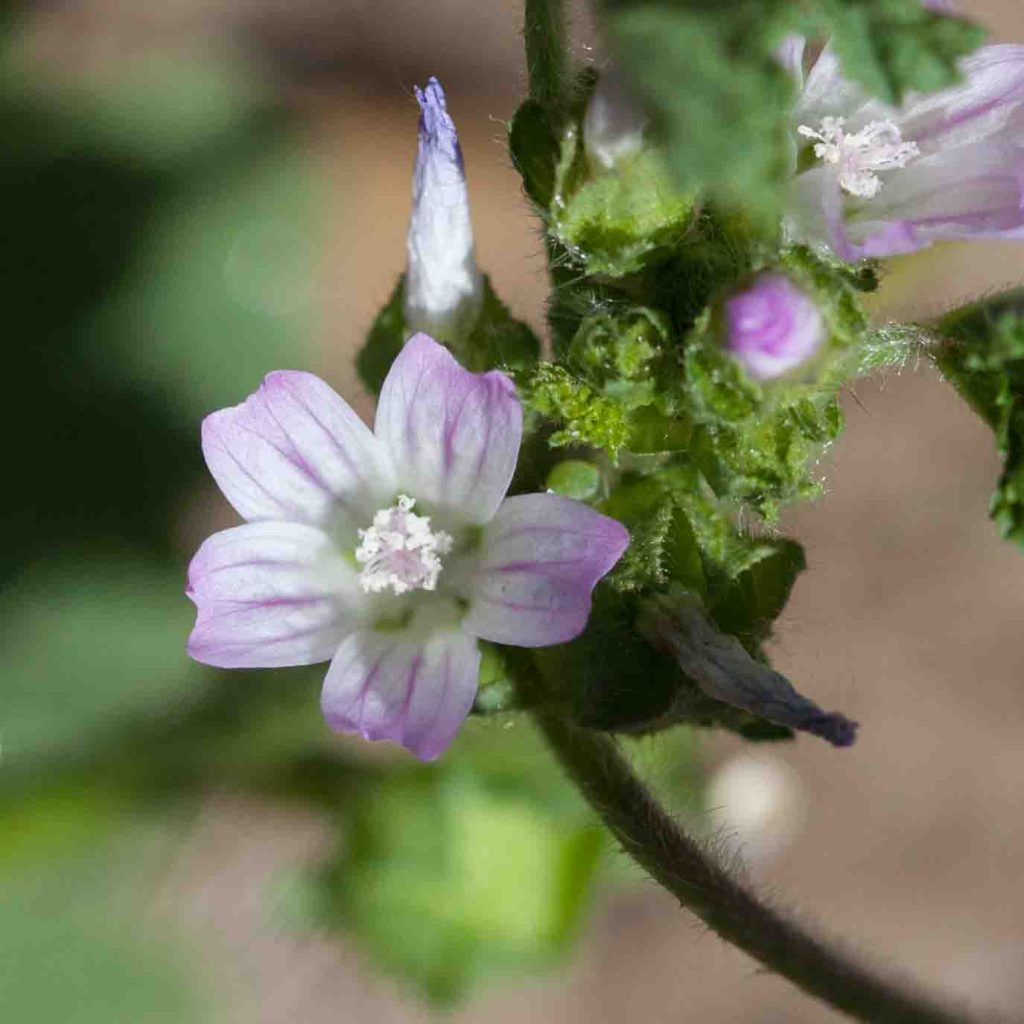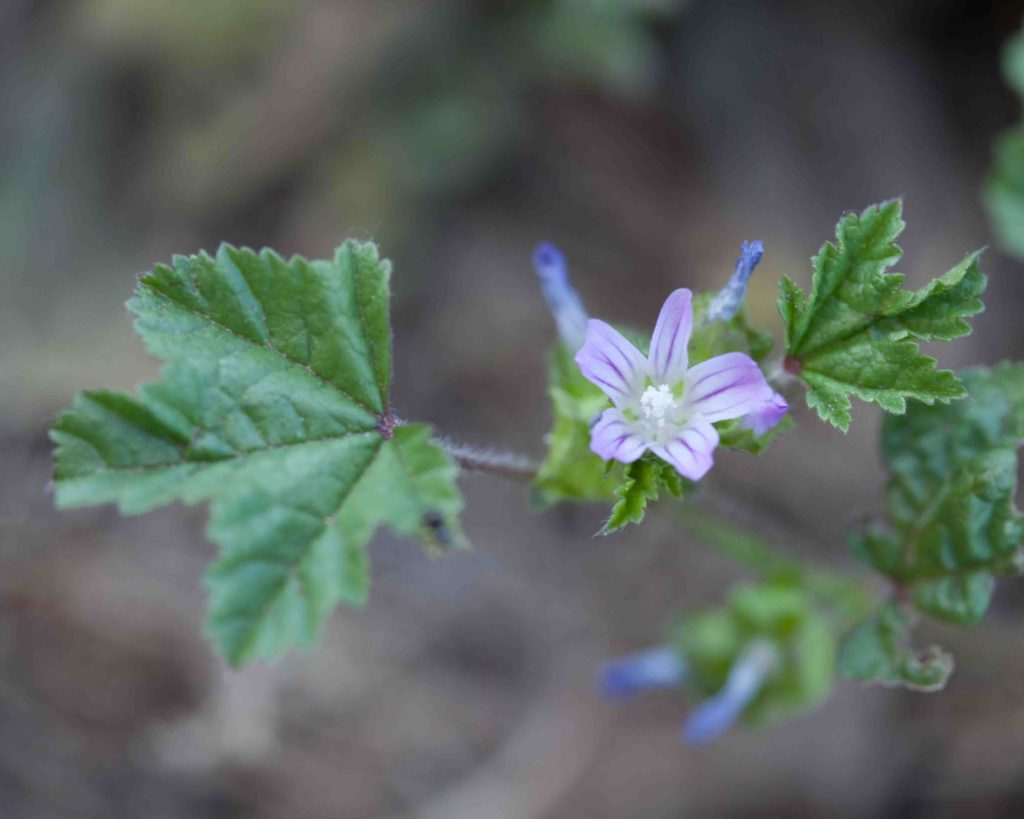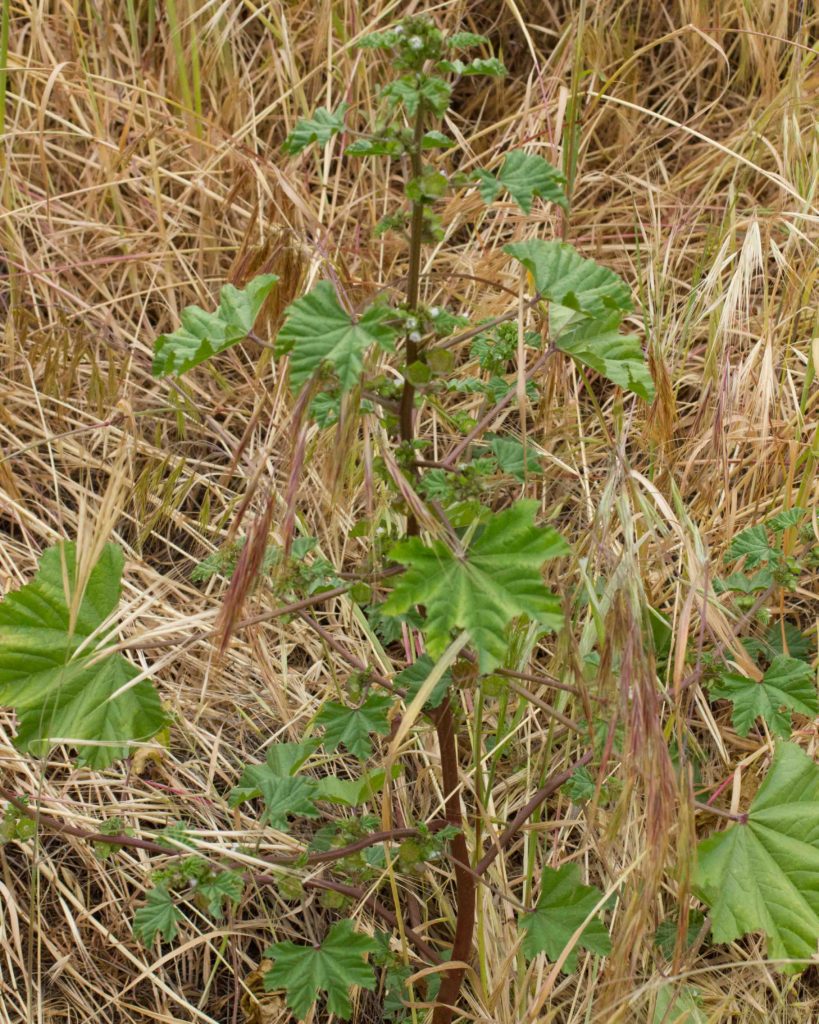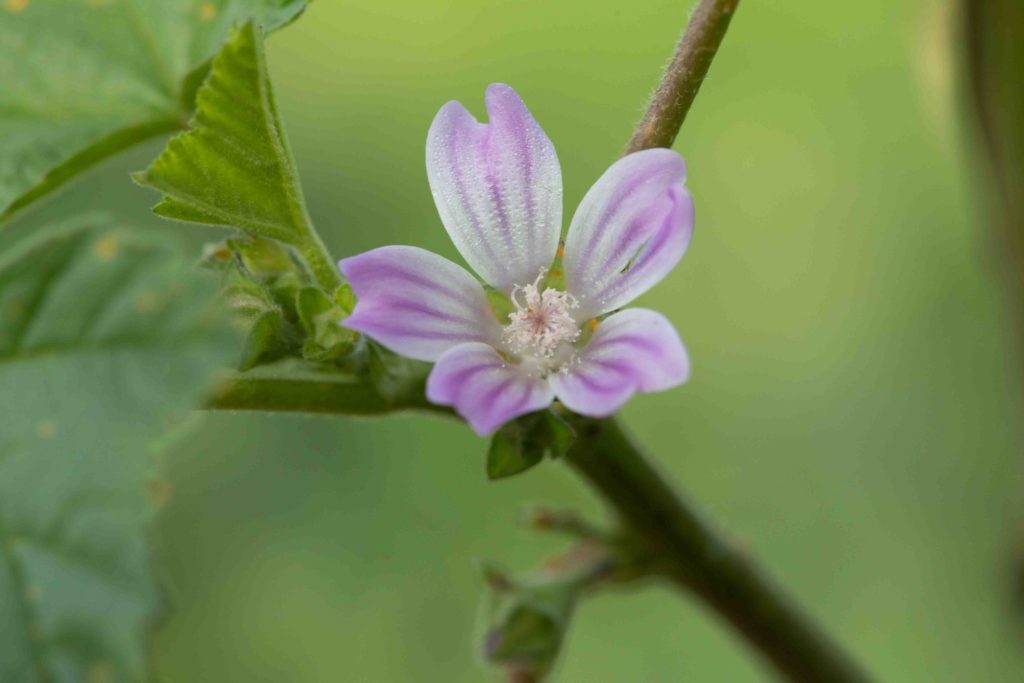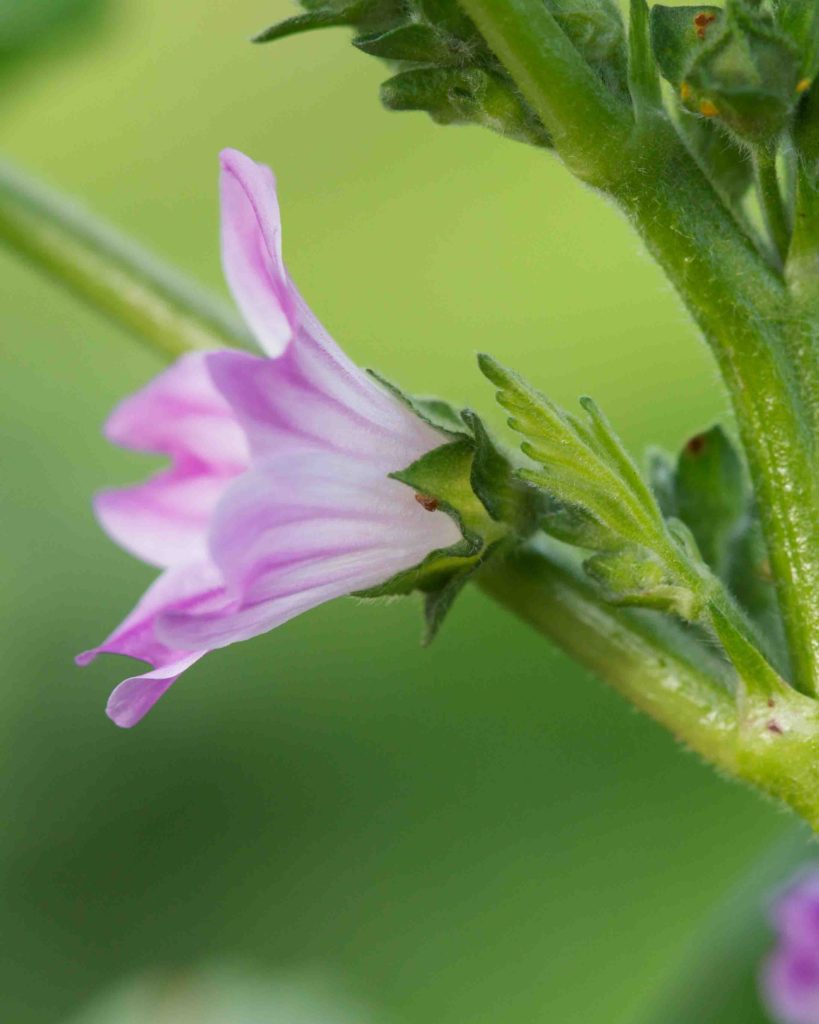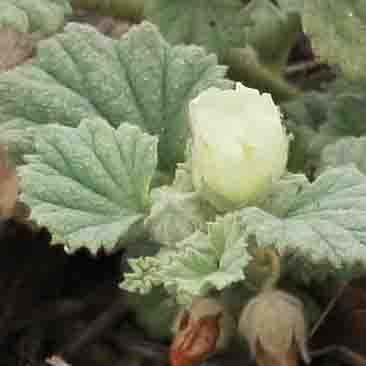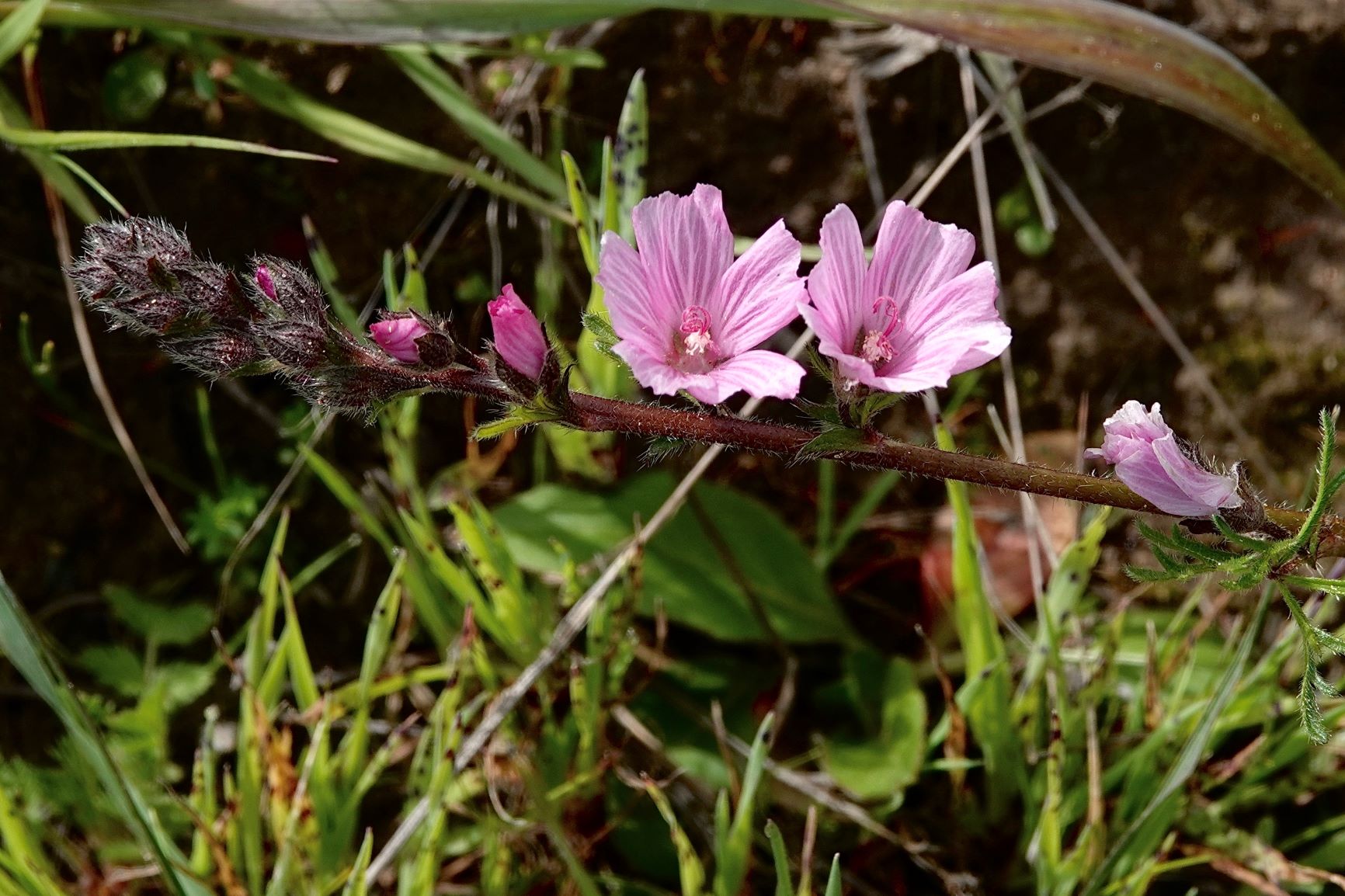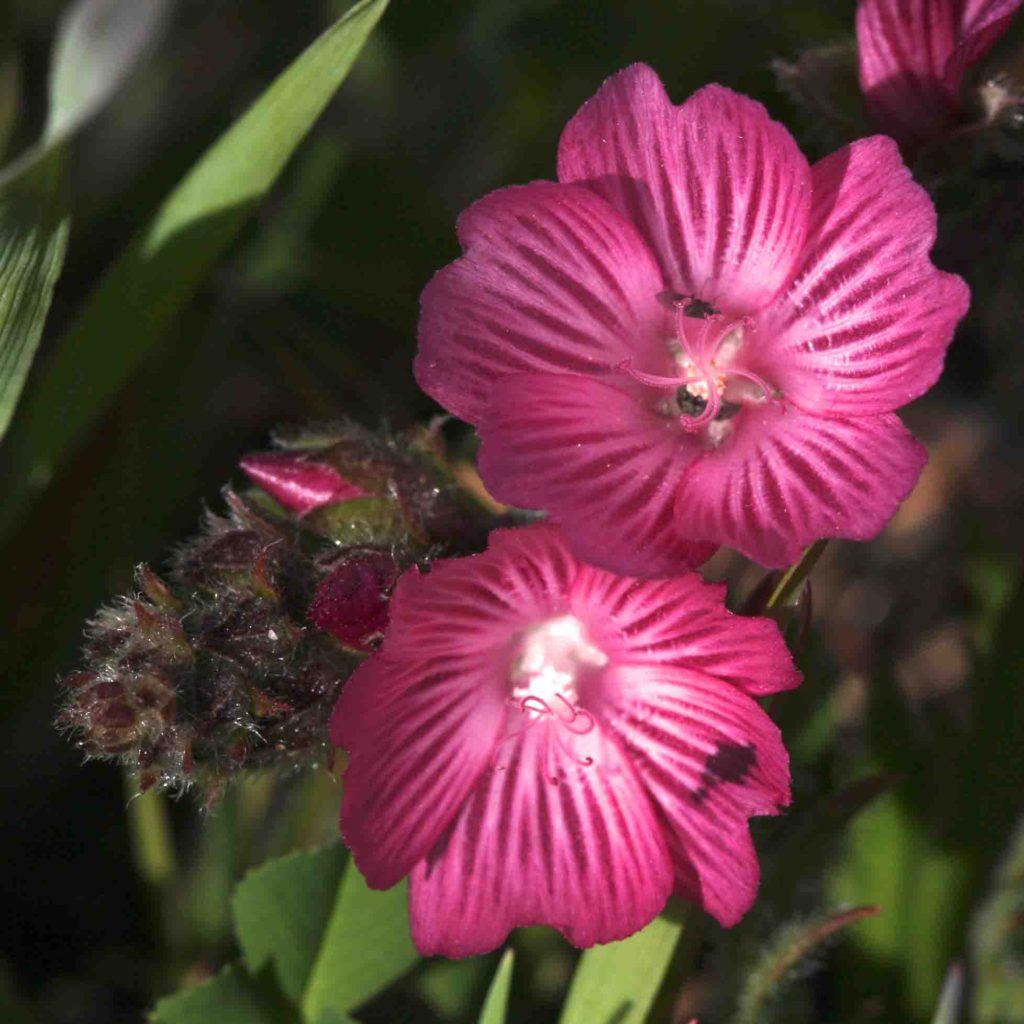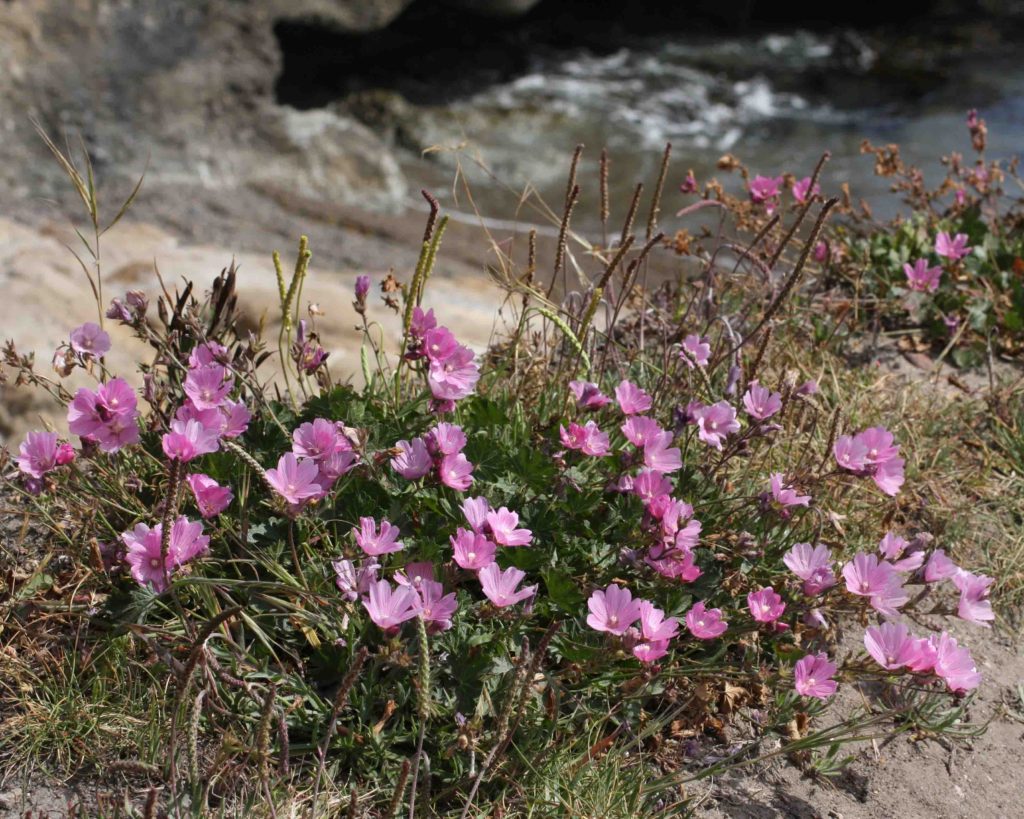Malvaceae: Mallow Family
Flannel Bush / Fremontia – Fremontodendron californicum
Blooms:
Apr–May
Plant Height:
2–5 m
Flower Size:
Large
Origin:
Native
Habitat:
Gravel slopes & canyons, mainly inland
Notes:
This large shrub or small tree is often seen planted in freeway medians. It has a profusion of large, bright yellow to yellow-orange, soft-hairy flowers, open, 5–6 cm across. It has no petals, but there are 5 large, silky, petal-like sepals. Leaves are leathery and covered with coarse stellate hairs, that can make handling them without gloves a painful proposition.
Carmel Valley Bush Mallow – Malacothamnus involucratus
Blooms:
May–July
Plant Height:
1–2 m
Flower Size:
Large
Origin:
Native
Rare or endangered?
Yes – 1.b2
Habitat:
Disturbed places
Notes:
This has typical bush mallow flowers, pale pink and bowl-shaped, generally in a head-like cluster. It has leaf-like bracts, often wider than the petals. Leaves are bright green, becoming glabrate above and stellate-hairy below. Found only in Monterey County and occasionally in San Luis Obispo County, this is known largely from Carmel Valley and Fort Hunter Liggett and surrounding areas. Formerly named Malacothamnus palmeri var. involucratus.
Jones’ Bush Mallow – Malacothamnus jonesii
Blooms:
May–July
Plant Height:
up to 3 m
Flower Size:
Large
Origin:
Native
Rare or endangered?
Yes – 4.3
Habitat:
Open chaparral in foothill woodland
Notes:
This is most easily recognized by its very pale gray-green leaves and stems, velvety to white-tomentose and stellate-hairy on both surfaces. The calyx lobes are strikingly different from some other Bush Mallows, awl-shaped to lanceolate, noticeably longer than they are wide. Flowers are similar to other Bush Mallows, pale pink and bowl-shaped. Found only in Monterey County and San Luis Obispo County, this is most commonly seen in the southeastern part of the County around Parkfield and Vineyard Canyon Road.
Arroyo Seco Bush Mallow – Malacothamnus palmeri var. lucianus
Blooms:
May–July
Plant Height:
1–2.5 m
Flower Size:
Large
Origin:
Native
Rare or endangered?
Yes – 1.b2
Habitat:
Interior valley foothills
Notes:
This has typical bush mallow flowers, pale pink and bowl-shaped, generally in a head-like cluster. It has leaf-like bracts. Leaves are pale to gray-green, densely stellate-hairy on both surfaces. A Monterey County endemic, this is known largely from the area around the Indians and towards Arroyo Seco. [Note: the Jepson Manual treats this as part of subsp. palmeri; the California Native Plant Society’s Rare & Endangered Plant Inventory continues to recognize it as a distinct species.]
Bull Mallow – Malva nicaeensis
Blooms:
Mar–June
Plant Height:
20–80 cm
Flower Size:
Large
Origin:
Eurasia
Habitat:
Disturbed places below 1200 m
Notes:
This is one of three common non-native mallows. Like Cheeseweed (Malva parviflora, see below), it is a small to medium sized shrub. Also, they both have 5-petaled flowers, pink to blue-violet, with darker pink veins and coarse, roundish to kidney-shaped leaves. This has petals about twice as long as the calyx. The calyx is 4–6 mm long, larger when in fruit, and sometimes enclosing the fruit. Fruits are flattish with 7–10 segments. Bractlets are 4–5 mm, ovate to oblong.
Cheeseweed – Malva parviflora
Blooms:
Mar–May
Plant Height:
20–80 cm
Flower Size:
Medium
Origin:
Eurasia
Habitat:
Disturbed places
Notes:
This is one of three common non-native mallows. Like Bull Mallow (Malva nicaeensis, see above), it is a small-to medium-sized shrub. Also, they both have 5-petaled flowers, white to pinkish with darker pink veins and coarse, roundish to kidney-shaped leaves, often more or less folded. This has petals equal in length to the calyx, which is about 3 mm long. Fruits are flattish with 10–11 segments. Bractlets are 1–2 mm, linear to thread-like.
Cretan Mallow – Malva pseudolavatera
Blooms:
Apr–June
Plant Height:
1–3 m
Flower Size:
Large
Origin:
Europe
Habitat:
Disturbed places on coastal bluffs & dunes, increasingly inland
Notes:
This is one of three common non-native mallows. Unlike Bull Mallow and Cheeseweed (Malva nicaeensis & parviflora, see above) it is a large shrub. It has correspondingly large leaves, coarse, shallowly 5-lobed, up to 10 cm long. The flowers are similar to the others named: 5-petaled, white to pinkish, with darker pink veins and coarse, roundish to kidney-shaped leaves, often more or less folded. This has petals more than twice as long as the calyx. Calyx lobes are triangular, with acute tips. Fruits are flattish, with 5–6 segments. Bractlets are ovate to round, and shorter than the calyx.
Alkali Mallow – Malvella leprosa
Blooms:
Apr–Nov
Plant Height:
10–40 cm
Flower Size:
Large
Origin:
Native
Habitat:
Moist saline places, many communities
Notes:
This is a prostrate plant with a hairy stem. The silvery-green leaves are lobed and wavy, 1–3.5 cm across. The flower is cup-shaped with 5 petals, white or pale yellow, sometimes with a rosy tint. The sepals are pink. The fruit has 7–10 segments. Photo #3 by CJH.
Checker Bloom / Checker Mallow – Sidalcea malviflora subsp. malviflora
Blooms:
Mar–July
Plant Height:
15–60 cm
Flower Size:
Large
Origin:
Native
Habitat:
Moist open coastal meadows and lower coastal hills
Notes:
A common plant, though variable in its appearance. Generally low-growing and spreading, it can also send up tall, erect stems. The flowers have 5 bright to dark pink petals, with prominent veins. Lower leaves are 2–6 cm across, fan-shaped to almost circular, and separated into 7–9 lobes. The lobes may themselves be dissected, but not deeply. Upper leaves are much smaller. Photos #1-2 by CJH.
